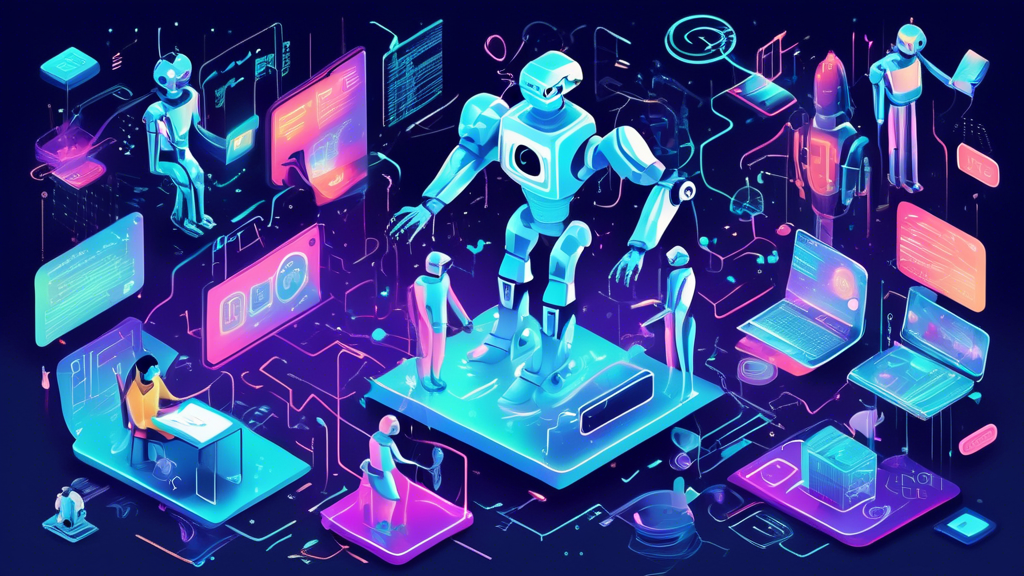20 Facts About AI Coding
AI coding, also known as AI programming, is the engine behind creating intelligent algorithms and computer systems capable of learning, reasoning, and solving complex tasks with minimal human intervention. Here are 20 fascinating facts about AI coding that shed light on its capabilities, challenges, and implications for the future.
1. Roots in Logic and Mathematics
AI coding originated from disciplines like logic and mathematics, with pioneers like Alan Turing laying foundational concepts in the mid-20th century through his work on the Turing Machine and the concept of algorithmic logic.
2. Machine Learning is a Subset
Machine Learning (ML), a critical component of AI, involves creating algorithms that can learn from and make decisions based on data. It’s a subset of AI coding and requires substantial expertise in statistics and data science.
3. Deep Learning Drives Advances
Deep Learning, a more advanced branch of ML, uses neural networks with many layers (hence deep) to process data in complex ways, enabling significant breakthroughs in image and speech recognition, among other areas.
4. Programming Languages Vary
Languages like Python, Java, and C++ are popular for AI coding due to their robust libraries, frameworks, and support for complex mathematical operations and data processing tasks.
5. AI Requires a Lot of Data
The effectiveness of AI systems often hinges on the quantity and quality of data they’re trained on. More data usually leads to more accurate and reliable AI models.
6. Ethical Considerations are Critical
AI coding raises ethical questions regarding privacy, autonomy, and bias. Ensuring AI systems are fair and do not perpetuate biases or infringe on privacy is a growing concern in the field.
7. A Growing Job Market
The demand for professionals skilled in AI coding is rapidly growing across various sectors, including tech, healthcare, finance, and automotive, reflecting the technology’s broad applicabhility.
8. Frameworks and Libraries Accelerate Development
Frameworks like TensorFlow, PyTorch, and Keras simplify AI coding, allowing developers to create complex AI models with fewer lines of code.
9. AI Coding Can Be Energy Intensive
Training sophisticated AI models, especially deep learning algorithms, can require substantial computational resources and energy, raising concerns about the environmental impact.
10. Open Source Drives Innovation
The AI community benefits from a strong open-source culture, facilitating knowledge sharing and collaboration that accelerates innovation and lowers barriers to entry for newcomers.
11. AI Can Enhance Software Development
AI coding is not just for creating AI systems; it’s also used to build tools that can improve software development processes, such as debugging tools, automated testing, and code generation.
12. AI Can Learn from Unstructured Data
One of AI’s strengths is its ability to learn from unstructured data (data that is not organized in a predefined manner), such as texts, images, and sound, unlocking valuable insights that were previously inaccessible.
13. Not Just for Big Tech
While big tech companies lead in AI development, its applications are not limited to tech giants. Small and medium enterprises are increasingly adopting AI to solve specific business challenges.
14. AI is Transforming Healthcare
In healthcare, AI coding is behind innovations in diagnostic procedures, patient care, and personalized medicine, offering the potential to save lives and improve health outcomes.
15. AI and Robotics
AI coding is integral to developing autonomous robots that can perform complex tasks, from manufacturing to surgery, by processing sensory data and making decisions in real-time.
16. AI in Everyday Applications
Almost everyone interacts with AI on a daily basis, whether through virtual assistants, recommendation systems on streaming services, or spam filters in email clients.
17. The Challenge of Bias
AI systems can inadvertently learn and perpetuate societal biases if the data they’re trained on is biased. Addressing this challenge is a priority in AI coding and research.
18. AI-driven Cybersecurity
AI coding enables the development of sophisticated cybersecurity measures capable of detecting and responding to threats in real-time, making digital spaces safer for users.
19. Continuous Learning and Adaptation
Many AI systems are designed to continuously learn and adapt over time, improving their performance and functionality as they process more data.
20. The Future of AI Coding
The future of AI coding is bound to see even more significant innovations, with research pushing towards more generalized and adaptable forms of AI that can perform multiple tasks with minimal supervision.




